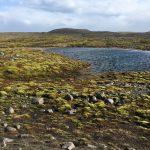Though Iceland rank the highest for gender equality, there is certainly room for improvement. It has been ranked top on the Global Economic Forum’s Global Gender Gap for 9 consecutive years. Due to the remote nature of the country and a low population, there are plenty of job opportunities for Icelanders. Hence, the nation simply could not afford for women not join participate in the work force. Through this log entry, I will analyze gender equality in Iceland through looking at female representation in politics, workplace, and arts and culture.
Gender equality is the equal rights, responsibilities, and opportunities between men and women, and girls and boys (UN Women, 2001). In the political sphere, Iceland had been pushing for gender equality since the 80s. Having elected Vigdís Finnbogadóttir as President in 1980, it was a ground breaking moment not only for the country, but set a precedent for the world. In 2009, the first female prime minister Jóanna Sigurðardóttir in Iceland. She was the first openly homosexual woman in the political arena. However, President Guðni reflected in our discussion that two women in a long history of male leaders are not enough. On the HeforShe website, Guðni made a public commitment to eliminate gender pay gap by 2022(Guðni, 2016). He also pledged to work with United Nations to “Engage men across Iceland in gender equality”.
Though Iceland is making great strides for an equal society, there is still apparent prejudice towards both genders in the workforce. Although the Parental Leave Act no. 95/2000 was established in 2000, there are more women than men who assume the responsibility of being a full-time parent after the parental leave period(Olafsdottir, 2018). A couple is entitled to 9 months of parental leave in total, 3 months are given to both the mother and father respectively, while the remaining three months can be divided among them as they wish. 98% of mothers use their full three months, while only 75% of fathers use theirs(2018). More importantly, mothers are more likely to stay at home after childbirth while fathers will resume work. Even though Iceland is ranked the highest in gender equality, the gender wage gap still exists in the country. The gap is closing in both the private and public sector, dropping from 22% in 2008 to 16% in 2016. Surprisingly, this is higher than some of the other Nordic countries.
From Shea’s presentation, I’ve also learned that there is a lack of women directed movies in the Iceland’s film industry. In fact, there are only 6% of women directed films, dropping from 21% between 1990 to 1999(Demurtas, 2018). Laufey Guðjonsdóttir, who is the Director of the Icelandic Film Centre pointed out movies made by women are “harder to market than movies made by men”(2018). However, there are talks of creating gender quotas from the Icelandic Film Centre.
Whether it is in politics, workplace, or the film industry, an increase of female participation and representation is beneficial for everyone. Since Vigdís Finnbogadóttir was elected, the number of females participating in politics increased drastically. In 2017, it was reported that women still make up 38.6% of the governing body ( Topping, 2017). There has also been more policy made that were family friendly, such as providing highly subsidized daycare for children above two years old, and nine months parental leave. In the workplace, UN Women states that women in leadership roles can increase organizational effectiveness of companies( McKinsey & Company, 2014). As for the film industry, I believe movies with a strong female lead such as Star Wars and Wonder Women has been greatly inspirational. I hope to see Iceland continue breaking the boundaries and advance in setting an example of gender equality for the world.
Bibliography
“Facts and Figures: Economic Empowerment.” UN Women, www.unwomen.org/en/what-we-do/economic-empowerment/facts-and-figures#notes.
Iceland, President. HeforShe, www.heforshe.org/en/impact/iceland.
“McKinsey & Company.” McKinsey & Company, www.mckinsey.com/.
Olafsdottir, Katrin. “Iceland Is the Best, but Still Not Equal.” Søkelys På Arbeidslivet, vol. 35, no. 01-02, Aug. 2018, pp. 111–126., doi:10.18261/issn.1504-7989-2018-01-02-07.
“OSAGI Gender Mainstreaming – Concepts and Definitions.” United Nations, United Nations, www.un.org/womenwatch/osagi/conceptsandefinitions.htm.
Topping, Alexandra. “There’s Proof: Electing Women Radically Improves Life for Mothers and Families.” The Guardian, Guardian News and Media, 7 Dec. 2017, www.theguardian.com/us-news/2017/dec/06/iceland-women-government-better-for-mothers-america-lessons.

